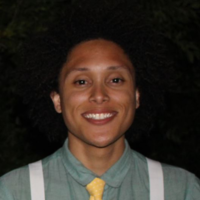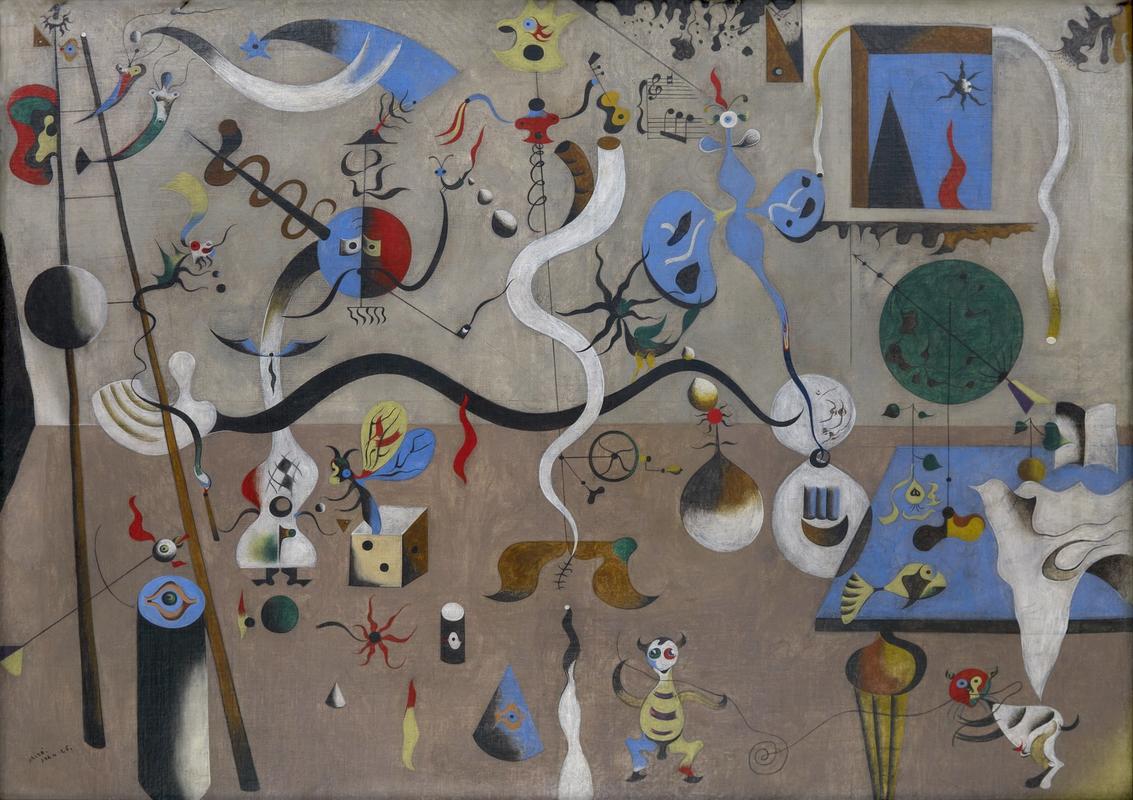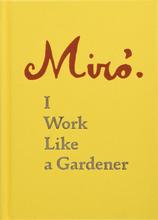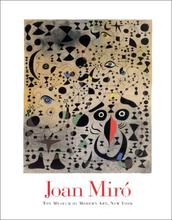More about The Harlequin's Carnival
- All
- Info
- Shop

Contributor
Harlequin’s Carnival is probably famed Surrealist painter Joan Miró’s most identifiable work.
You might even recognize it from that one semester of Art History you took in community college. However, Salvador Dali and Pablo Picasso are the artists from this time that managed to breach into pop culture to the point that even people with a very general knowledge of art know enough about them to pass a Buzzfeed quiz. If you were really about that art history life, you’d know they were both contemporaries of Joan Miró. And even though it may seem like those two get a lot of the praise, it’s really Miró who had the most sauce of them all.
Andre Breton, the Zaddy of the Surrealist movement, dubbed Miró as “the most surrealist of them all.” And I mean, you can take one look at Harlequin’s Carnival and see what he meant. In Dali’s The Persistence of Memory, the abstractions are more rooted in symbolism. Melting clocks can only mean so many things. But Miró’s Carnival takes a long, hard look before things begin to become recognizable. And even then, you still probably wouldn’t be able to tell what was going on if it wasn’t for the title.
That’s primarily in part due to Miró’s use of biomorphism. Biomorphic shapes approximate things like humans and animals, but they still feel very distant from the real thing. This is represented in spades in Harlequin’s Carnival. There’s a ladder, a man with a mustache, an abnormally shaped bug, and a plethora of other things things that look like they lie on the fringes of reality.
Miró once said “I make no difference between painting and poetry.” First of all, that’s a poem in and of itself. It’s an incredibly profound and self-aware statement that serves as a pretty lucid explanation for his otherwise surreal work. You take one look at Harlequin’s Carnival and it looks like a poem reads. A lot of people don’t understand poetry. It can be very nuanced. And, at the same time, very raw. But the more you read, the more things start to clear up. And the brilliance hits you in the face like a gust of wind. If you take Miró for his word, Harlequin’s Carnival may look monumental, but there are nuggets hidden within. You’ve just gotta be willing to dig.
One could say that the long-necked and sad mustached guitar looking dude is supposed to be the Harlequin. Others might point to evidence within the painting that suggests it is representing Miró himself. For instance, the guitar has a hole in the middle of its body. If it was simply a guitar, then that would be normal. But with the biomorphism on display, it can definitely be interpreted as a man. And if that’s the case, a gigantic hole in what would be his stomach is probably enough of a problem to make an appointment with his doctor.
Miró, like a lot of artists, was always trying to scrounge up enough dough for his next meal. He was about that starving artist life for real. So that pitiful, hungry looking guitar could represent Miró’s rugged lifestyle during what would have been the height of his Surrealist years. Nowadays however, Miró’s spirit is laughing all the way to the big bank in the sky. He’s currently the highest selling artist from that All-Star Surrealist era. Homie’s work has been sold for $1.46 billion. Mad simoleons. Remember that for when you retake Art History. It might be an essay question.
Sources
- Artschaft. “Joan Miró - Harlequin’s Carnival.” January 10, 2018. Accessed February 22, 2019. https://artschaft.wordpress.com/2018/01/10/joan-miro-harlequins-carniva…
- Blouin Artinfo. “Top Surrealists of All-Time” February 6, 2019. Accessed February, 22, 2019. https://www.blouinartinfo.com/news/story/3529989/top-surrealists-of-all…
- The Art Story. “Important Art and Artists of Surrealism.” Accessed February 22, 2019. https://www.theartstory.org/movement-surrealism-artworks.htm
Featured Content
Here is what Wikipedia says about The Harlequin's Carnival
The Harlequin's Carnival (Spanish: Carnaval de Arlequín) is an oil painting painted by Joan Miró between 1924 and 1925. It is one of the most outstanding surrealist paintings of the artist, and it is preserved in the Albright–Knox Art Gallery in Buffalo, New York.
Created between 1924 and 1925, Harlequin’s Carnival is one of Joan Miró's best-known pieces. Harlequin is the name of a well-known Italian comic theater character that is generally identified by his checkered costume. The ‘carnival’ in the title of the painting may refer to Mardi Gras, the celebration that occurs before the fasting of Lent begins.
In 1924, poet André Breton formed the Surrealist movement. Around the time of the group's formation, Miró started to paint in the surrealist style. Surrealism focused on dreams and the subconscious as artistic material, and Miró was able to draw from these ideas. He painted the subconscious, but also his own life experiences and memories. To combine these two sources he draws on his imagination to create magical elements in his paintings. This can even be seen in his early work, for instance in his 1922 detailist painting The Farm.
Check out the full Wikipedia article about The Harlequin's Carnival
















It is an essay question! Using this article to write it as we speak! Thanks for the help lol